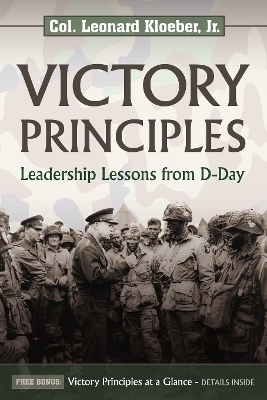Yugoslavia experienced the terror of the Ju 87 Stuka dive-bomber from the first days of war in April 1941, to the end in 1945. The complete story is presented in this new book that includes operational history, first-hand accounts, and rare wartime images of Stuka operations against Partisans. German and Italian Stukas contributed to the Axis powers' quick defeat of the Kingdom of Yugoslavia, and after the job was done, the dive-bombers left for the Eastern Front. But with growing antifascist r...
Hitler's 'National Community' provides a new and updated examination of German society under the Nazis, analyzing and synthesizing a generation of scholarship to offer new insight into the key debates surrounding the subject. Beginning with a focus on Nazi attempts to forge a new national identity and awareness, the book goes on to consider the role and fate of all those excluded from this new national community. Author Lisa Pine interweaves her analysis of society with a consideration of cultur...
The Naval Institute Press will publish the much sought after six volumes of the Kure Maritime Museum's The Japanese Naval Warship Photo Album series. Originally published in Japan in 2005, each album contains photographs officially taken by the Kure Maritime Museum, as well as those taken by private individuals. These pictorial records document the main types of Japanese vessels, from battleships to submarines, based on the best images from Shizuo Fukui, a former Imperial Japanese Navy commander...
Final Assault on the Rising Sun
by Chester W Marshall and Warren E Thompson
Combat Chronology 1941-1945 (Part 2 of 2) (U.S. Army Air Forces in World War II)
by Us Air Force and Office of Air Force History
At a time when the West seems ever more eager to call on military aggression as a means of securing international peace, Nicholson Baker's provocative narrative exploring the political misjudgements and personal biases that gave birth to the terrifying consequences of the Second World War could not be more pertinent. With original and controversial insights brought about by meticulous research, Human Smoke re-evaluates the political turning points that led up to war and in so doing challenges so...
U.S. Army Divisions, 1942-1945: Order of Battle and Combat Diaries
by Yves J. Bellanger
British Army of the World War Two War Establishment Tables
by G. Kennedy
Ligne Maginot, Tome 4 (L'Encyclopedie de L'Armee Francaise)
by Jacques Sicard, Jean-Yves Mary, and Alain Hohnadel
In the first part of this eagerly-awaited fourth volume, the authors in great detail study the fortifications built to face the Italian threat over the Alps. No stone is left unturned: development of the fortified south-eastern line, building the loftier fortifications, technical means and specific armament. The second part of Volume 4 exhaustively reviews the infantry and specific artillery which continuously from 1935 to 1940, held the south-eastern barrier. The importance of the subject has...
The early battles of North Africa between the Axis powers and the British Commonwealth and her European allies were among the very last clashes of chivalry. At the small town of El Alamein belligerents met and fought, on two occasions, for overall control of both Egypt and the Suez in the latter half of 1942\. For the Allies, the battles were also a chance to destroy Axis ambitions in the Western Desert, whilst gaining mastery of the Mediterranean and a foothold in Southern Europe. The two batt...
Secret Projects of the Kriegsmarine
by Sgarlato, Nico and Sgarlato, Alessio; Paterson Lawrence
The Secret Projects of the German Kriegsmarine in World War II gives a comprehensive overview of advanced German naval building, and excitingly includes previously unseen, secret projects. This book is relatively short, yet densely packed with historical naval insight. It will thus appeal to the busy reader interested in boat modelling, or indeed anyone who is fascinated with naval warfare. The designs covered by the title are wide-ranging, from U-boats and hydrofoils, to submarines, explosive m...
We shall go out and bomb every building in Britain marked with three stars in the Baedeker Guide' the German Foreign Office announced in April 1942 as the Luftwaffe attacked Exeter, Bath, Norwich, York and Canterbury. Over a thousand people died. These raids were direct retaliation for RAF raids on equally historic German cities. Hitler had ordered that Preference is to be given where attacks are likely to have the greatest possible effect on civilian life' and in this narrow aim -as Jan Gore s...
In June 1944, Operation OVERLORD, the greatest ever amphibious invasion, initially overwhelmed German Normandy defences. To attempt to stabilise the situation, Hitler deployed his elite Waffen-SS divisions to avert the crisis. This classic Images of War book describes how the formidable Leibstandarte, Das Reich, Hitlerjugend, Hohenstaufen, and the Frundsberg SS divisions with supporting Wehrmacht divisions fought fanatically despite facing overwhelming enemy airpower and determined well-led All...
Based on an incredible breadth of first-hand testimony, this is a unique collection of eyewitness accounts from World War I and II. John Walter draws on meticulous research and the reminiscences of more than fifty snipers, tracing their journeys from recruitment and selection through training, combat and its aftermath to reveal a surprising commonality of experience, even across nationalities. Laying bare the triumphs and brutalities of sniping, the personalities and psychologies of those who...
VICTORY Principles is written in the three part format of a Staff Ride, the same technique used to train army officers. A Staff Ride focuses the study of history on leadership ""lessons learned"" that can be applied in the future. Part one of this book is the fascinating story of D-Day itself. Part two describes seven universal leadership lessons, the VICTORY Principles. Part three is a guide to the battlefield sites on the northern coast of France. In VICTORY Principles, Colonel Kloeber uses hi...
General Mark W. Clark was one of the most successful - and controversial - US officers of World War II. Reprinted here for the first time in fifty years are his memoirs, which have been newly updated by his biographer, Martin Blumenson. A 1917 graduate of West Point, Clark was wounded on his first day of combat while serving with the 5th Division in France in June 1918. In 1942, George Marshall sent Clark to England, where he so impressed Winston Churchill that the prime minister nicknamed him...
After the disaster at Villers Bocage, there was a second hold up to the Allies penetration of the German defenses at Hill 112 when Montgomery launched a counterattack on this position, to the south west of Caen on July 10. Monty had still not taken the capital city of Normandy despite it being a primary objective for the British but at Hill 112 just as at Villers Bocage, they ran into a deluge of artillery and powerful Tiger tanks. There was quite some danger of the whole thing devolving into tr...
Writing Japan's War in New Guinea (Asian History, #10)
by Victoria Eaves-Young
Tamura Yoshikazu is destined to die on the alien shores of the New Guinea warzone. Devoid of family contact, perplexed by the unfamiliarity of his environment, deprived of even meagre amenities and faced with the spectre of debilitating illness and starvation, this solitary soldier commenced a diary in the early part of 1943. Employed in the hard labour of building airstrips, he is ground down by tedium, disheartened by the now dysfunctional military hierarchy, consumed by grief at the meaningle...
With the order "Panzers forward!" German tanks rolled into battle, smashing into the enemy with engines roaring and muzzles flashing. From Poland and the Eastern Front to the Ardennes, Italy, and northern Africa, panzers stunned their opponents-and the world-with their lightning speed and raw power, and the soldiers who manned these lethal machines were among the boldest and most feared of World War II. Franz Kurowski tells the action-packed stories of six of the most daring and successful of...
In this major and comprehensive work, hailed by Le Monde as a "monumental study, " Hermann Langbein shatters the myth that all prisoners of concentration camps during World War II passively let themselves be slaughtered. A prisoner himself and one of the leaders of resistance at Auschwitz, Langbein painstakingly documents the detailed account of the history of the camps and the story of resistance. Spanning the initial years to the chaotic weeks before liberation, Against All Hope is the first s...



















